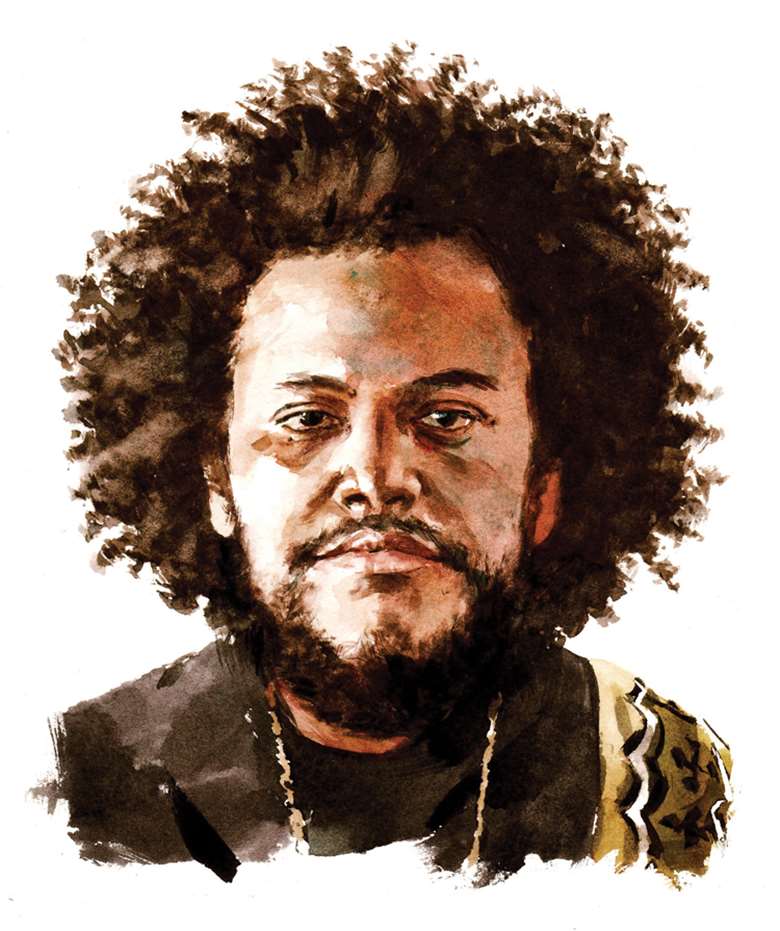Kamasi Washington | My Music: ‘All music is connected in some way – like the way all people are connected, even if you don’t really acknowledge it’
Gramophone
Tuesday, June 28, 2016
The saxophonist, composer and bandleader on the links between jazz and classical music, and how he wrote his epic triple-disc album

My dad is a musician so I started playing music from a young age – drums and piano. My interest in classical music didn’t really come along until much later when I was in high school – I switched from a normal school to a music academy when I was in ninth grade – I was about 13.
I started playing in the orchestra and the wind ensemble and that’s when I got turned on to people like Stravinsky, Ravel and Hindemith. It was pretty intense and serious – we were playing some difficult music. At the school there were so many musicians, so the jazz students weren’t necessarily in those ensembles. But when I got into them I became friends with students who were doing classical music, and they turned me on to a lot of stuff. I had a friend who played French horn and who performed Prokofiev’s Romeo and Juliet on the piano for me. He gave me a CD of music that he liked, which really set me on my way. Another friend had a whole bunch of scores. It was a mixture of teachers and students who guided me into having an interest in classical music.
‘Whether it’s folk music, jazz or rock‘n’roll, most musicians, even if they don’t say it, pull from other things, they get inspired by other things’
It was mainly music of the 20th century. Harmonically it was closer to jazz. It was cool – the complexity of the orchestrations, the melodies, the counterpoint, I could just immediately grasp the beauty of it. With Stravinsky it was the density – I like dense harmony. I was into avant-garde jazz, and Stravinsky’s music had a similar feel to it. Ravel wrote melodies that were just really beautiful. I have recordings of the complete Ravel piano works and he definitely inspired me to take the time to really focus on melody whenever I’m writing. And Prokofiev had a lot of jazz in his approach.
Especially now, jazz and contemporary classical music are very, very much in the same realm, and I think that historically, as far back as the 1940s, there was a cross communication between musicians. Charlie Parker was really into Stravinsky, and I heard that Ravel and Prokofiev admired people like Duke Ellington. I think that any great musician has a degree of curiosity, in that you’re going to explore outside your own backyard. Whether it’s folk music, jazz or rock‘n’roll, most musicians, even if they don’t say it, pull from other things, they get inspired by other things. All music is connected in some way – like the way all people are connected, even if you don’t really acknowledge it.
I’ve known all the musicians on my album [The Epic] since I was a kid – some since I was three years old. We’ve grown up playing music together. Every time something sparked an interest, I shared it with them. So I know that they have the reference to play in the way that I’m hearing it, but also to bring something to it that I didn’t hear. When we play we’re very improvisational – there’s a song, there’s a piece of music that I’ve written, but I’ll leave it wide open for us to change it or alter it in any way that we see fit. While we’re playing the music, sometimes someone will play something that will tip the whole band into a whole other song, and we’ll just go! And that’s the fun part of playing with that band, it’s almost as if we’re composing the music as we’re playing it.
I wanted to maintain that for the record. But I wanted to involve a larger ensemble and I wanted to do more writing. So what I did was record the band first and then I wrote my [string and choral] arrangements around what we had done spontaneously. I would listen to the music over and over again and imagine what would be cool to have happen that would complement what the band had done. Over the course of a couple of months it started to really turn into something that was natural – I wanted it to feel like we were in there together. I was trying to listen to not just what the soloist was doing, but the accompaniment. It was a different way of writing – I’ve never really written in that way before. Choirs add a powerful element – with an instrument you can reach people, but the voice touches people in a different kind of way. Stravinsky’s Symphony of Psalms was my reference. I remember when I first heard that – those voices just grab you and really immerse you in the music.
This article originally appeared in the April 2016 issue of Gramophone. Never miss an issue of the world's leading classical music magazine – subscribe today














